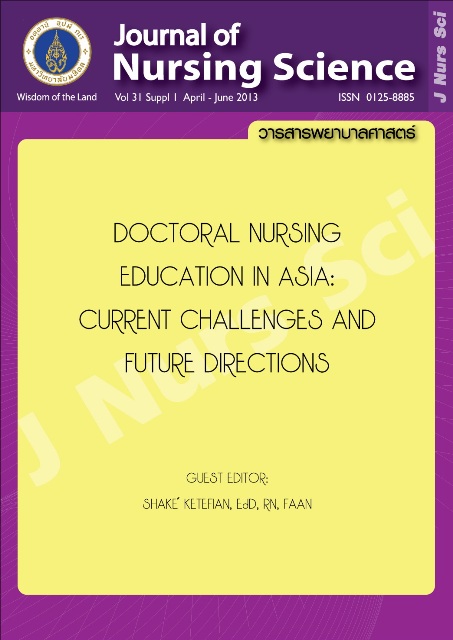Doctoral Nursing Education in Japan
Main Article Content
Abstract
Current Status
Doctoral nursing education in Japan has changed rapidly over the past 20 years, resulting in the move of nursing education fully into the higher education system in Japan, with appropriate student numbers and quality. In 1988 the first establishment of doctoral nursing education occurred at St. Luke’s College of Nursing Tokyo, after which the number of doctoral programs in Nursing increased to 61 by 2010. As administrators recognize the benefits for stable management of making their university attractive to applicants by providing graduate education, they start to create more graduate schools. Some graduate programs are independent as departments of nursing, whereas some are integrated in departments of medicine, physiotherapy, occupational therapy, or health sciences. The number of nursing universities has increased in every single prefecture. Undergraduate programs expanded from 11 universities in 1993 to 188 by 2010, and master’s programs increased from eight in 1998 to 127 by 2010. The increase in nursing programs allows potential students who desire to pursue higher education in nursing to find a school in their communities.
Students have to choose to be researchers or advanced practitioners at the master’s level in Japan. Many students who choose to be practitioners attain the license of an advanced practitioner, called a Certified Nurse Specialist (CNS), who specialize in various clinical areas, including cancer nursing and psychiatric nursing. There are many graduate curricula to prepare for the completion of this postgraduate credential.
Article Details
Copyright Notice: Nursing Science Journal of Thailand has exclusive rights to publish and distribute the manuscript and all contents therein. Without the journal’s permission, the dissemination of the manuscript in another journal or online, and the reproduction of the manuscript for non-educational purpose are prohibited.

Disclaimer: The opinion expressed and figures provided in this journal, NSJT, are the sole responsibility of the authors. The editorial board bears no responsibility in this regard.


